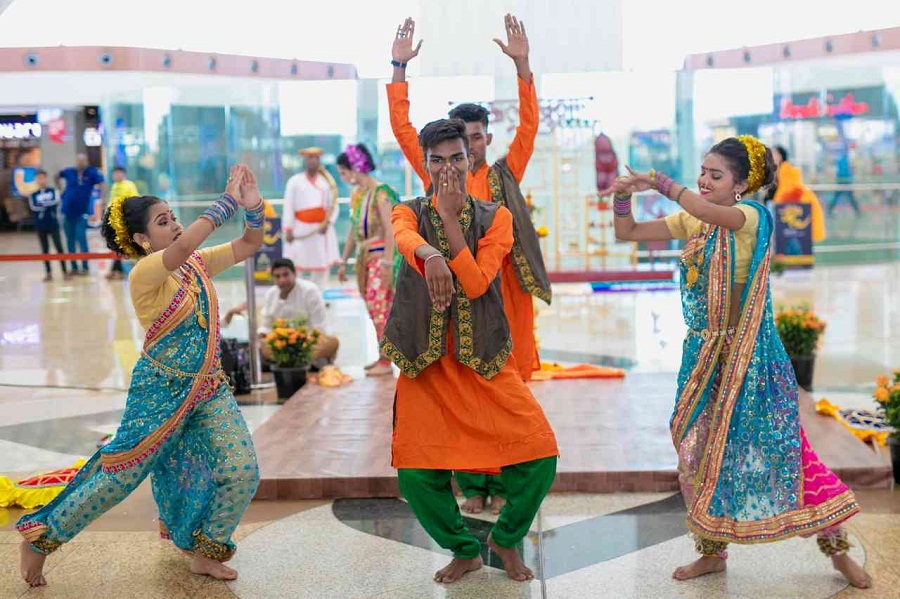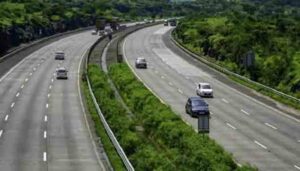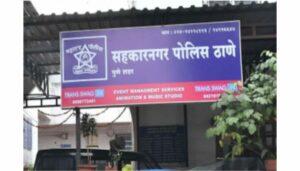Mumbai International Airport Revives Maharashtra’s Art, Culture and Cuisine Through a Contemporary Carnival

Mumbai, 29 June 2019: As a portrayal of forgotten real-life observations into expressive art, GVK led Mumbai International Airport Limited’s (MIAL) Chhatrapati Shivaji Maharaj International Airport (CSMIA) is hosting a three-month-long carnival at the airport. The carnival commenced during the 2019 World Museum Day where the carnival set – ‘Paaoolkhuna,Imprints of Maharashtra’ is in line with the theme of International Council of Museums (ICOM): ‘Museums as Cultural Hubs: The future of Traditions’. The carnival celebrates the food, art, culture and heritage of Maharashtra showcasing the grandeur of the state which was formed on May 1, 1960. The festival is planned for over 12 weeks and is divided into various segments for passengers travelling via T2 until July 2019.
The Jaya He Museum at Mumbai International Airport acts as harbingers of change – to become a cultural hub where passengers get a chance to converge and enhance their knowledge on the State of Maharashtra. Through the carnival, the museum showcases the strength of the state and invites travellers to sample the food, art, dress, culture and heritage and widen their experiences.
Involving and invoking the passengers in their travel journey through numerous activities, and art installations, the carnival discovers the unexplored aspects of Maharashtra’s rich offerings. The state of Maharashtra which is culturally bracketed in five parts – Konkan (the coastal belt), Khandesh, Desh, Vidarbha, and Marathwada, each having its own distinct culture & traditions, history, food & cuisine, art & craft, heritage buildings, and textiles. The commonalities being the language (Marathi), natural resources: the long clear stretches of the Konkan beaches, flora – the UNESCO Kaas Valley of Flowers (Satara), fauna (myriad Wildlife sanctuaries), rivers, the millennia-old Sahyadri mountain range older than the Himalayas, Mughal and Maratha forts, Hindu, Buddhist and Jain caves, lakes, including the prehistoric Lonar Crater; deep history, vast literature, scintillating dance forms and age-old folk practices, including yoga. The carnival brings to life these lesser known traditions, culture, and heritage through the language of art.
The airport being a major transfer hub and a gateway to destinations, the passengers travelling via T2 are always on the go. CSMIA being a public space is transforming itself from being just a transit platform to a stage for artists to showcase, engage and educate the passengers from across the globe. The carnival showcases various sections depicting these snippets and cultural values to the people. Starting with the logo which is the depiction of the art of Warli Tribe who paint with rice paste in geometric shapes; the logo denotes a storyteller – the Sutradhaar, playing a form of a trumpet the Tutari, an instrument used to herald an auspicious arrival; leaving his footprints – the Paaoolkhuna, imprinting his mark on the global audience. Through this depiction of a Cultural Museum, the story of Maharashtra is woven in where travellers will get to experience, explore, engage, educate and be entertained with the untold stories that unfold.
Keeping in mind GVK’s sustainable initiatives, the installations created by young artists for the carnival at CSMIA are made of upcycled and recycled materials to create unique masterpieces. The artworks include India’s tallest 3D printed installation shaped like a Banyan Tree called “Jhada”, and a one-piece rock-cut monastery temple inspired by the Ajanta caves made from corrugated sheets inside the terminal. Apart from these activities, the museum at CSMIA has curated a first-of-its-kind human library following a library analogy of allowing humans to narrate their stories instead of books, thereby creating a more intimate space for travellers’ engagement. To further create excitement amongst the passengers, the carnival is also exhibiting cultural hubs – a one-stop exhibition amplifying the Maharashtrian traditions and culture.
Speaking about this initiative, Rekha Nair, Airport Services & Museum Director, GVK MIAL says “‘Paaoolkhuna – Imprints of Maharashtra’ is curated to bring to life the rich indigenous heritage and art from the state. We are proud of the platform Jaya He GVK New Museum is providing the artists, students, and storytellers to engage and showcase their work to passengers from around the world. As a catalyst in the industry, our aim to bridge the gap between traditional Indian and contemporary art bringing it closer to our passengers at MIAL.”
Jaya He is an extension of GVK MIAL’s vision to preserve and portray art by building communities while creating value for the passengers in this digitalized world. As a crusader in expressing traditional art in contemporary fashion, Jaya He Museum takes the opportunity to become the agent of change and a cultural hub where diverse communities converge at a single point. The Jaya He Museum is strategically placed at Mumbai’s busy infrastructure project – T2, where over 48 million passengers travel annually.
The land is rich and while the passengers can’t physically go to all these areas, flyers travelling via Mumbai T2 can partake the abundance of the rich history and the heritage that is timeless while discovering the unity in diversity and the colours of passion that each region has to offer.








